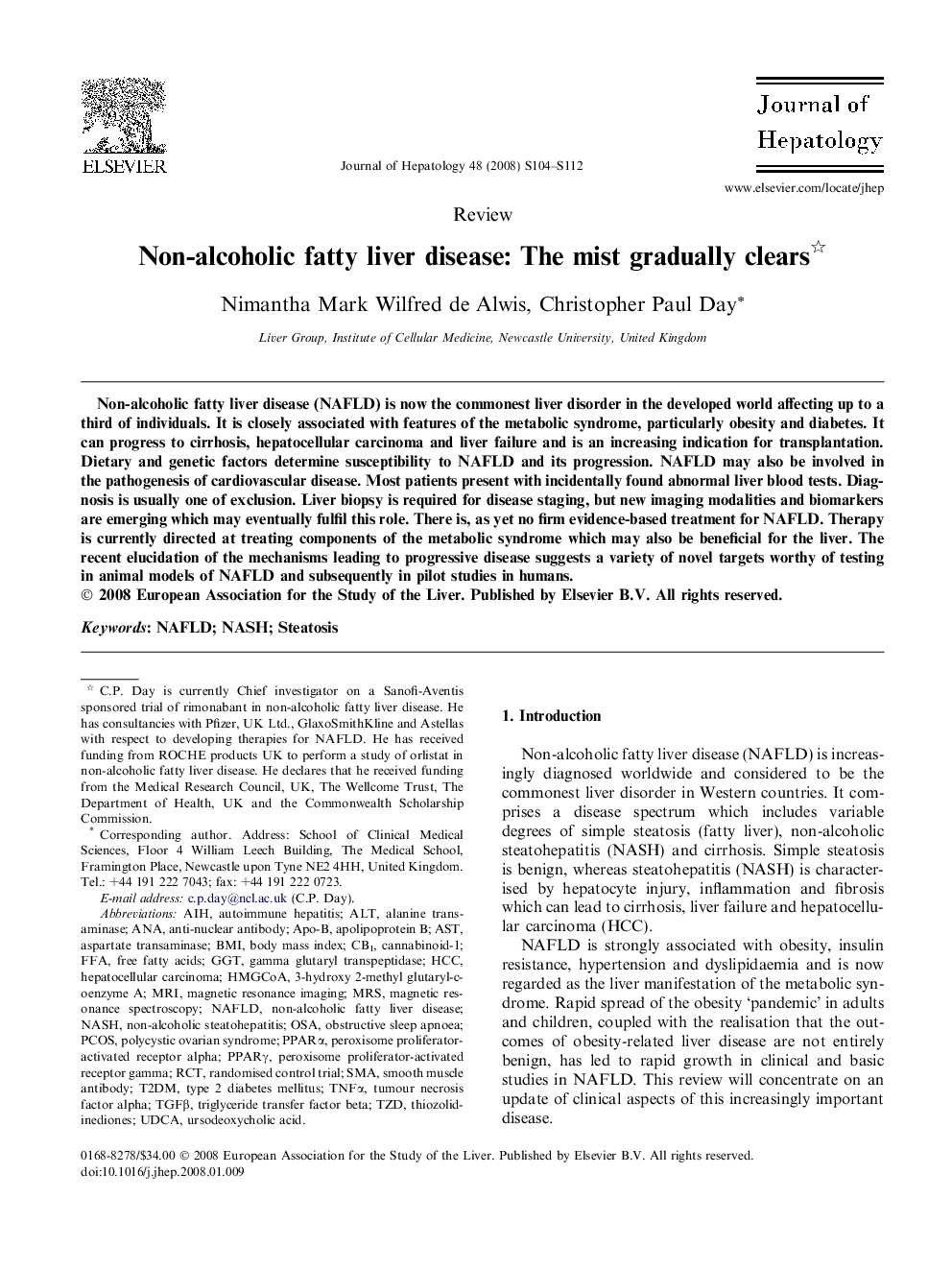| کد مقاله | کد نشریه | سال انتشار | مقاله انگلیسی | نسخه تمام متن |
|---|---|---|---|---|
| 6108795 | 1211192 | 2008 | 9 صفحه PDF | دانلود رایگان |

Non-alcoholic fatty liver disease (NAFLD) is now the commonest liver disorder in the developed world affecting up to a third of individuals. It is closely associated with features of the metabolic syndrome, particularly obesity and diabetes. It can progress to cirrhosis, hepatocellular carcinoma and liver failure and is an increasing indication for transplantation. Dietary and genetic factors determine susceptibility to NAFLD and its progression. NAFLD may also be involved in the pathogenesis of cardiovascular disease. Most patients present with incidentally found abnormal liver blood tests. Diagnosis is usually one of exclusion. Liver biopsy is required for disease staging, but new imaging modalities and biomarkers are emerging which may eventually fulfil this role. There is, as yet no firm evidence-based treatment for NAFLD. Therapy is currently directed at treating components of the metabolic syndrome which may also be beneficial for the liver. The recent elucidation of the mechanisms leading to progressive disease suggests a variety of novel targets worthy of testing in animal models of NAFLD and subsequently in pilot studies in humans.
Journal: Journal of Hepatology - Volume 48, Supplement 1, 2008, Pages S104-S112